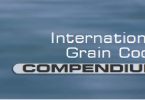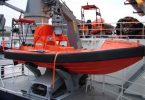Aim of code of safe practice for solid bulk cargoes:-
The International Maritime Solid Bulk Cargoes Code (IMSBC Code), and amendments to SOLAS chapter VI to make the Code mandatory, were adopted by the Maritime Safety Committee (MSC), 85th session, in 2008. The amendments entered into force on 1 January 2011. The IMSBC Code replaced the Code of Safe Practice for Solid Bulk Cargoes (BC Code), which was first adopted as a recommendatory code in 1965.
The aim of the code of safe practice for solid bulk cargo were
- To highlight the dangers associated with shipment of the bulk cargoe
- To give guidance on procedures to be adopted
- To list typical material currently being shipped in bulk
- To describe test procedures to determine various characteristics of bulk cargoes.

The format of the IMSBC Code is similar to that of the existing BC Code. Like the BC Code, the IMSBC Code categorizes cargoes into three groups – A, B, and C:
Group A consists of the cargoes that may liquefy if shipped with moisture content in excess of their transportable moisture limit.
Group B consists of cargoes that possess a chemical hazard that could give rise to a dangerous situation on a ship.
Group C consists of cargoes that are not liable to liquefy (Group A) and do not possess chemical hazards (Group B).
Solid bulk cargo means any cargo, other than liquid or gas, consisting of a combination of particles, granules, or any larger pieces of material generally uniform in composition, which is loaded directly into the cargo spaces of a ship without any intermediate form of containment.
The carriage of solid bulk cargoes other than grain shall be in compliance with the relevant provisions of the IMSBC Code.
Difference between Group A and Group C cargoes under the IMSBC Code:-
Cargoes that may liquefy are cargoes that contain a certain proportion of fine particles and a certain amount of moisture. Such cargoes are designated as Group A under the IMSBC Code.
Cargoes designated as Group C will not liquefy regardless of the moisture content and are therefore not hazardous.
In order to assess whether a given material may liquefy, Appendix 3 of the IMSBC Code specifies that any damp or wet cargo containing a proportion of fine particles should be tested for flow characteristics prior to loading.




